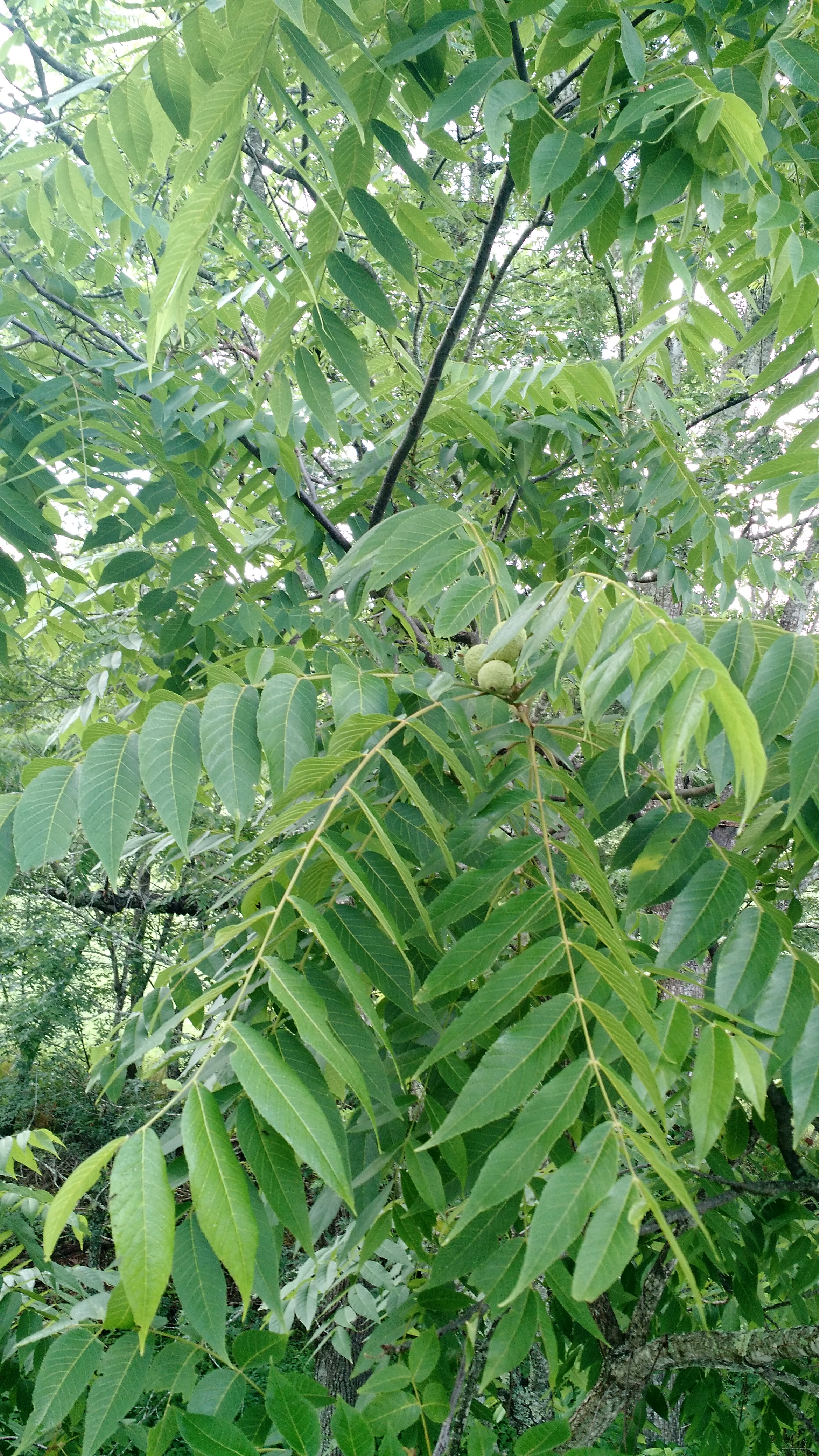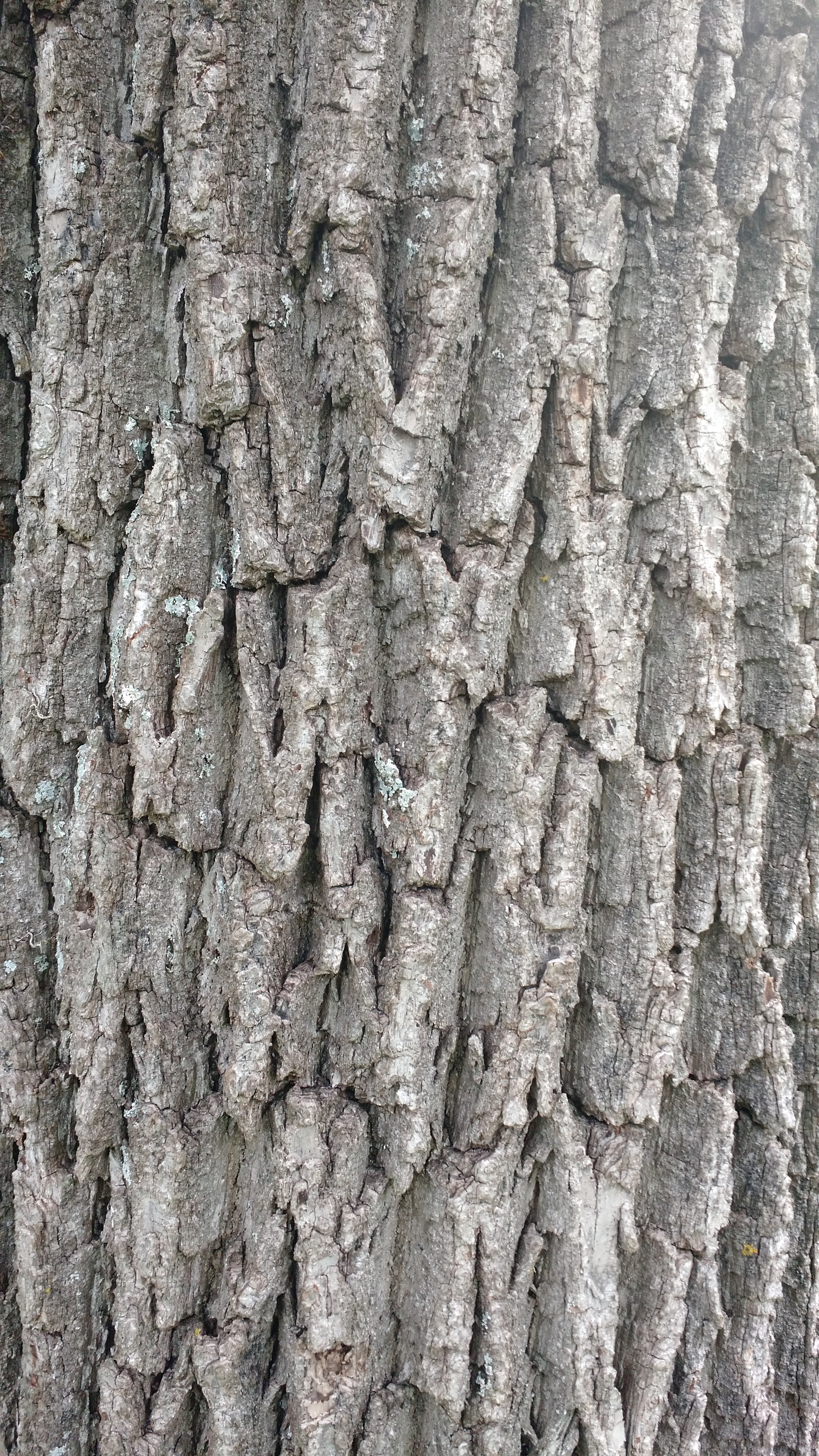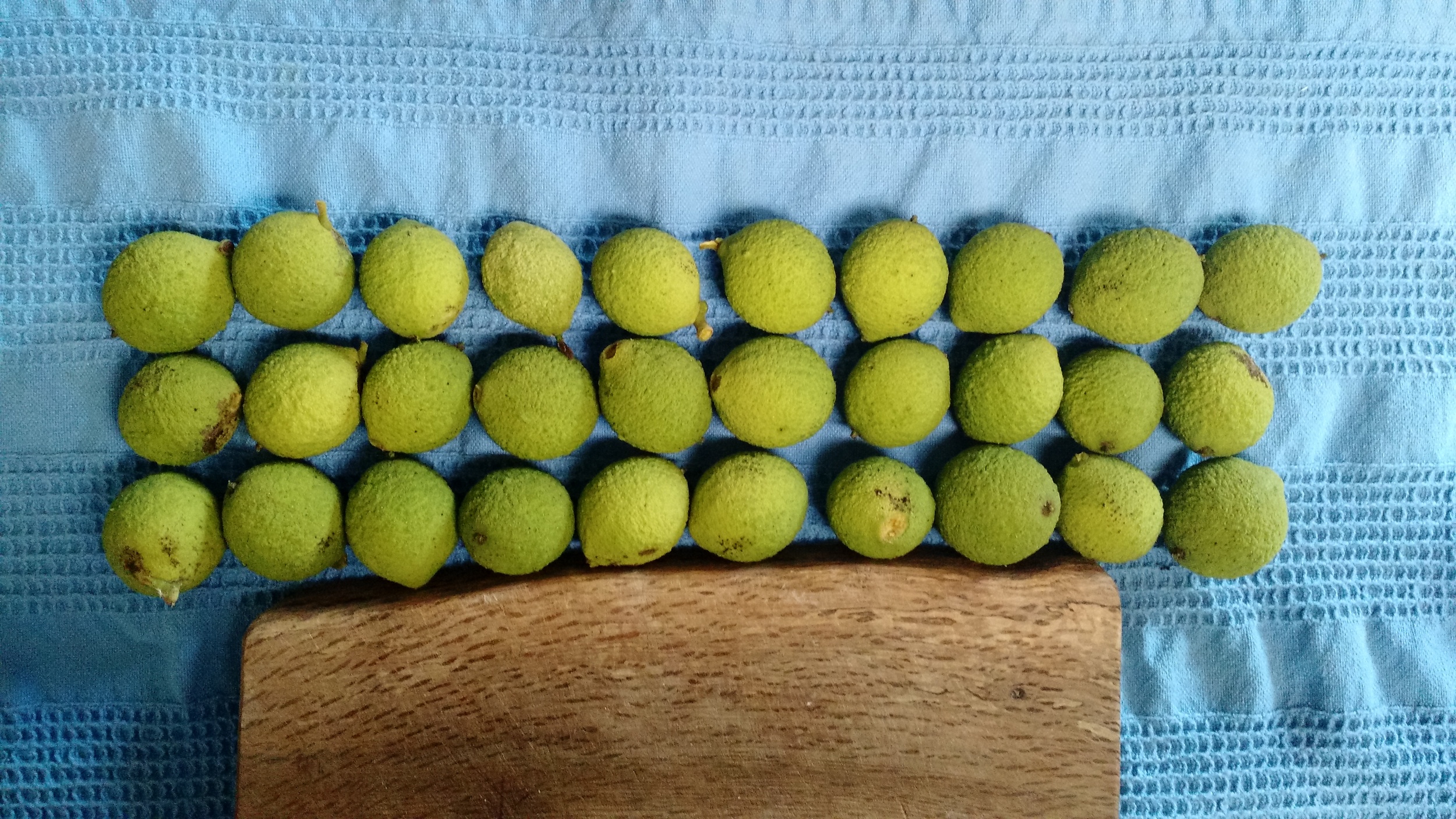The Eastern Black Walnut (Juglans nigra) is very common tree to the entire Southeastern U.S. These trees tend to grow in hardwood forests and forest edges. They are colonizing species and grow quickly in full sun. Known for its attractive appearance, nut bearing properties, and high quality hardwood these trees are commonly planted and can be found remaining on yard edges and old homesteads throughout the rural U.S.. This tree is a member of the greater Walnut Family (Juglandacea) including hickory, pecan, butternut, and walnut. Out of this family there are only a few species actually in the Walnut Genus (Juglans). Thayer presents a nice overview of this in his book (see references). A brief summary is provided below:
- Eastern Black Walnut - Juglans nigra - The most common and largest species in the U.S.
- Butternut or White Walnut - J. cincerea - Less commonly known with nuts that ripen earlier than other walnuts.
- Arizona Black Walnut - J. major - Small spreading tree with nuts resembling Eastern Black Walnut but smaller.
- Texas Walnut or Little Walnut - J. microcarpa - Small shrub-like species with nuts less than 1/2" in diameter.
- California Walnut - J. californica - Small spreading tree typically 20-40 ft tall.
- Northern California Walnut or Hinds Walnut - J. hindsi - A fairly large tree with nuts slightly smaller than the Eastern Black Walnut.
The English Walnut or Persian Walnut (Juglans regia) is perhaps the most commonly harvested and well-known walnut in the world. Not native to the U.S. this walnut has been cultivated and harvested throughout Europe for generations. Most commercially available nuts and other walnut products will be from this tree. It is perhaps because of the long standing trade and written history throughout Europe that make the knowledge and popularity of this tree so much more rich than our native Eastern Black Walnut. In comparison, our native Eastern Black Walnut has thicker, stronger shells making it more difficult to process than the European variety. Though it is said that Juglans nigra presents a more deep flavored and rich nut.
We have identified several uses for the "unripe" black walnut in addition to the obvious harvesting and eating of the ripe nut. Most of the recipes we have come up with reference the traditions of Europe (specifically Italy, France, and Britain). In the literature, I see hints of references to the traditional native american uses of the
Collected in early summer (traditionally June 24th, The Feast of San Giovanni, in Italy) when a little smaller than a golf ball the "unripe" walnuts can be prepared in several ways (maybe others too!):
- Tincture: An extract of the medicinal properties can be made with high proof alcohol and the unripe nuts collected in early summer. Basically fill a jar with quartered nuts and fill with alcohol. Shake daily and strain in about 4 weeks. A recent browse through an herbal tincture shelf in a health food store had black walnut tincture priced at $15.00 per bottle.
- Tea / Powder: Some brief research has found that the dried leaves are sold as a powder with certain anti-parasitic and apparently thyroid health related properties.
- Pickles: New to me, but I have one batch going so far! This is apparently well known throughout Britain and goes well with sliced hard cheddar cheese. I have also heard that the leftover pickling solution makes for a great marinade for wild game and other meats; particularly venison...
- Liqueur: We have made this several years in a row now and find it to be a delicious, healing tonic. Known as Nocino in Italy, and Liqueur de Noix in France, the Black Walnut Liqueur is becoming increasingly popular as an artisinal, wild-crafted cocktail. The basic recipe consists of 1 L vodka : 30 quartered, unripe nuts : 1 cup sugar. Aromatics such as cinnamon, clove, lemon peel, and vanilla bean are typically added as well. (See references for a full recipe). The final product is ready about 2 months after assembling the ingredients. The liqueur is delicious plain, in cocktails, over ice-cream, or added to baked goods.
See the following references for more detailed information. (These references have also been used in the development of this calendar entry):
- National Audubon Society - Field Guide to Trees - Eastern Region - General ID reference with descriptions, habitats, ranges and brief natural history information.
- Hunter.Angler.Gardner.Cook - http://honest-food.net/2014/06/30/pickled-walnuts-recipe/ - Recipe for pickled walnuts and some general commentary on the walnut.
- Natures Garden: A guide to identifying, harvesting and preparing edible wild plants by Samuel Thayer - A good all-around commentary on the black walnut with specific emphasis on wild harvesting.
- Dram Apothecary - http://dramapothecary.com/blogs/recipes/7785147-how-to-make-homemade-nocino - A classic recipe for Nocino (Black Walnut Liqueur)
* All references to medicinal properties are based on external research. Please make your own decision about using any of these products and make sure you have done your own research and properly identified the correct species before doing any of this on your own.*














